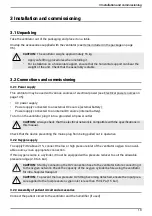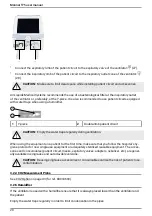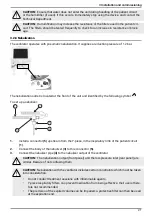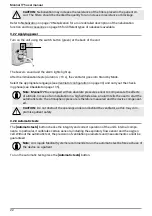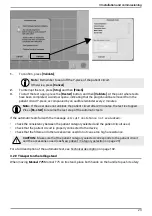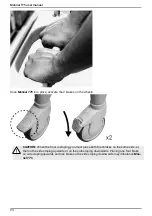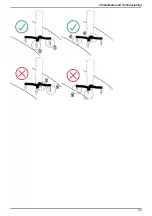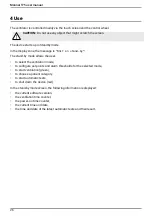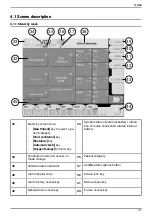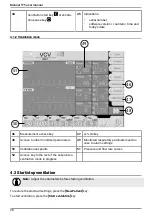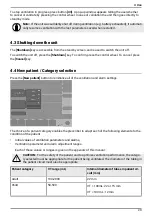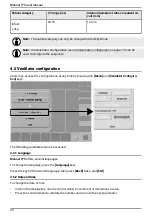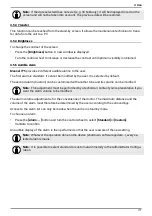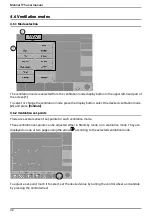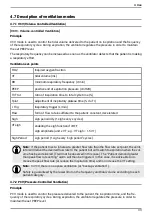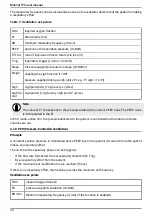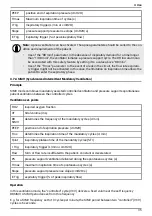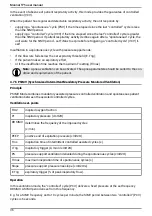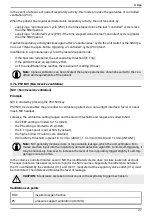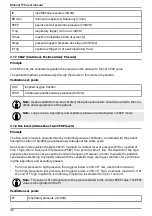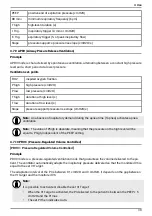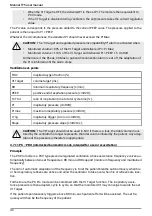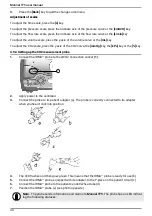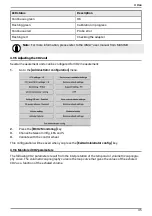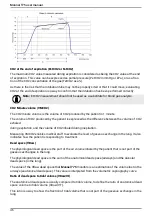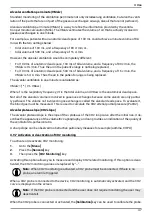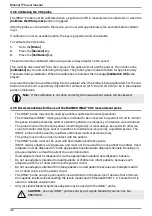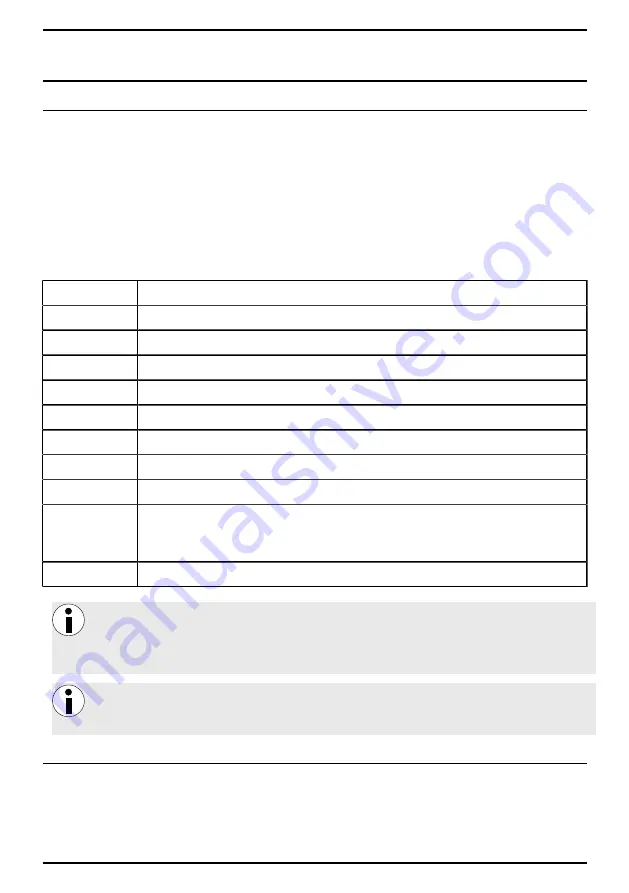
4 Use
4.7 Description of ventilation modes
4.7.1 VCV (Volume-Controlled Ventilation)
[VCV = Volume-controlled Ventilation]
Principle
VCV mode is used to control the tidal volume delivered to the patient on inspiration and the frequency
of the respiratory cycles. During expiration, the ventilator regulates the pressure in order to maintain
the set PEEP level.
The respiratory frequency can be increased as soon as the ventilator detects that the patient is making
a respiratory effort.
Ventilation set-points
FiO2
inspired oxygen fraction
VT
tidal volume (mL)
RR
minimum respiratory frequency (c/min)
PEEP
positive end of expiration pressure (cmH2O)
TI/Ttot
ratio of inspiration time to total cycle time (%)
Tplat
adjustment of inspiratory plateau time (% du TI)
I. Trig
inspiratory trigger (L/min)
Flow
form of flow rate insufflated to the patient: constant, decelerated
Sigh
sigh periodicity (1 sigh every x cycles)
VTsigh
enabling the sigh function if ≠OFF
sigh amplitude (unit x VT; e.g.: VT sigh = 1.5 VT)
Sigh Period
sigh period (1 sigh every “sigh period” cycles)
Note:
If the patient tries to inhale at a greater flow rate than the flow rate set point, the venti-
lator will deliver the desired flow rate to the patient but will switch to expiration when the vol-
ume has been delivered (TI will not be observed in this case). The “Patient demand greater
than peak flow rate setting” alarm will then be triggered. In this case, it is advisable to in-
crease the peak flow rate (or reduce the inspiration time) and/or increase the VT setting.
Note:
In VCV, there is no apnea ventilation (or “backup ventilation”).
Safety is guaranteed by the lower limit on the frequency and tidal volume according to each
patient category.
4.7.2 PCV (Pressure-Controlled Ventilation)
Principle
PCV mode is used to control the pressure delivered to the patient, the inspiration time, and the fre-
quency of the respiratory cycles. During expiration, the ventilator regulates the pressure in order to
maintain the set PEEP level.
33
Summary of Contents for MONNAL T75
Page 2: ......

